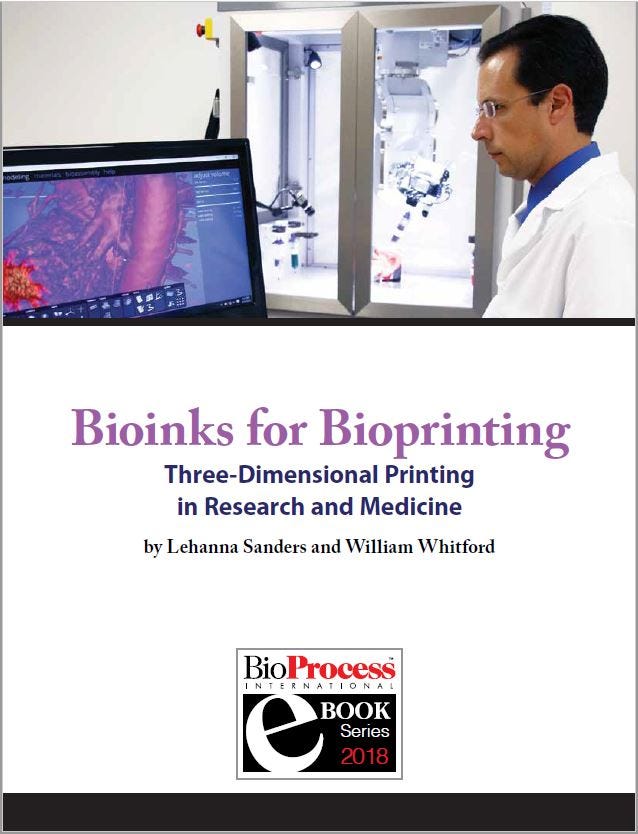eBook: Bioinks for Bioprinting — Three-Dimensional Printing in Research and Medicine
Three-dimensional (3D) printing is one method of digital biomanufacturing for both basic biological research and translational, clinical applications. The medical field has used it to create such constructions as 3D surgical models for preoperative planning, to assist surgeons in their procedure preparations, which improves postsurgical outcomes. Examples here include generation of cleft-palate models (1), orthopedic applications (2), and cardiovascular surgical planning (3). Other forms of 3D printing for biological applications — such as 3D bioprinting — go beyond such surgical planning applications. 3D Bioprinting (3DBP): 3D cell culture provides a biomimetic model of cell systems for many applications (see the box at right). Use of additive manufacturing techniques is growing, with living cells used for a number of such 3D cell culture applications. 3D bioprinting uses printing techniques to create 3D structures such as living tissue. The “printing” of biocompatible materials and living cells results in homogeneous or mixed-cell 3D structures that ultimately can present a highly organized pattern of disparate tissue components and shapes. In addition to creating biomimetic microenvironments, 3DBP technologies have been used to generate organ-on-a-chip systems for modeling tissue units of function through incorporating both 3D cell systems and fluid flow on a microscale. Other 3DBP strategies and workflows are used to produce 3D biosystems for a number of activities (see the box below). Many 3DBP technology platforms can incorporate an array of cell types and stromal components, so they can be used to generate tissue microenvironments that recapitulate physiologically relevant systems more accurately than standard two-dimensional (2D) culture methods. After fabrication, such 3D cell cultures can be placed within bioreactors to mature or grow over time. In such a workflow, time becomes the fourth dimension in “4D bioprinting.” 3DBP uniquely generates spatial gradients of cells, key structural components, and chemical compounds (including primary metabolites) or biological growth factors. The ability to spatially regulate those components comes through precision offered by robotic systems. In addition to generating final 3D structures, 3DBP can be applied to production of tissue-structural subunits for incorporation into final, complex, assemblies (technically, biofabrication). The latter activity is enabled by new tools that can assemble the multiple parts required in advanced biofabrication tasks (Photo 1). Just fill out the form to view and download the complete eBook. |
Get the eBook Now |
You May Also Like






